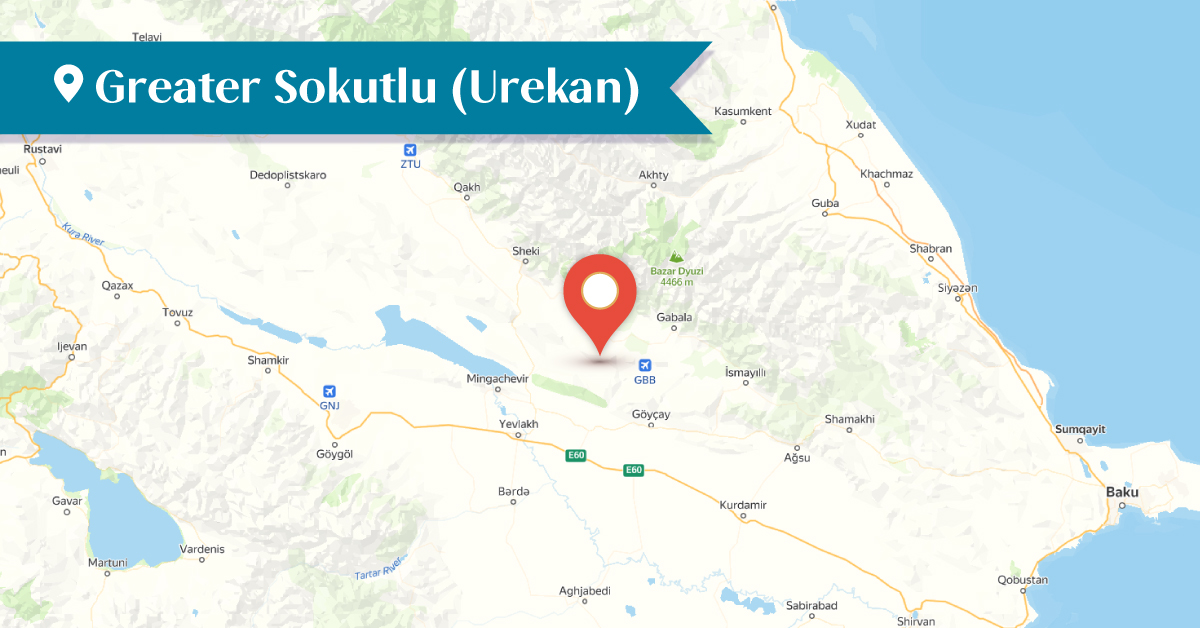2025
2025
2024-12-23

The village of Mets (Greater) Sokutlu or Urekan has been one of the oldest and most populous Armenian-populated villages in the region. It is located 30 km south of the district center Vardashen (renamed Oghuz in 1989). It was first mentioned in Armenian bibliography in 1434.
In the early 1720s, settlers from Artsakh also relocated here. This is evidenced by Catholicos of Gandzasar, Yesayi Hasan-Jalalyants wrote:
“There was also a priest named Barsegh, a native of Karabakh, from the land of Khachen, of the melik lineage. The people who had relocated were accompanied by him and his family. They renovated the village of Sokutlu and settled there because there was no better village than it.”
During the visit of Bishop Makar Barkhutaryants in 1888, the village had 350 Armenian households with a population of 2,107. By 1908, the population had grown to 2,464. In 1914, the village was entirely Armenian-populated, with a population of 2,800. In 1918, Mets Sokutlu was attacked by Turkish forces and Musavatists.
After the Sovietization of Azerbaijan, the villagers who had survived the massacres resettled in their native village. By 1986, Mets Sokutlu was home to approximately 40 Armenian households, 80 Molokan households, 5 Kurdish households, and 2 Azerbaijani households.
Until the deportation of Armenians in 1988, Mets Sokutlu was one of the three Armenian-populated villages in the Vardashen district, alongside the district center and Chalet.
In the village of Mets Sokutlu, there was a church named Saint Astvatsatsin (Holy Mother of God), which was destroyed in the early 1920s. The church had been built in 1671 during the tenure of Catholicos Hakob Jughayetsi of All Armenians and Catholicos Simeon of Aghvank (Gandzasar).
This is evidenced by the construction inscription published by Bishop Makar Barkhutaryants.
The Saint Astvatsatsin Church was built
During the patriarchate of Ter Hakob and the catholicosate of Ter Simeon
under the guidance of priest Vlas of Shamakhi, in the year 1671.
According to another stone inscription, the Saint Astvatsatsin Church was revitalized in the mid-18th century through the efforts of Ter Hovsep.
I, Father Hovsep, cleaned the Church of the Holy Mother of God,
which had 7 spans of garbage from the times of Haji [Chelebi], in the year 1751.
During the visit of monument researcher Samvel Karapetyan in the 1980s, the large Armenian cemetery of the village was still preserved, containing around 3,000 tombstones, including gravestones dating back to the medieval period.
The village is now called Böyük Söyüdlü and is inhabited by Azerbaijanis.
Bibliography
Barkhutaryants M., Land of Aghvank and its Neighbors: Artsakh, Yerevan, 1999.
Karapetyan S., The Armenian Lapidary Inscriptions of Aghvank Proper, Yerevan, 1997.
Yesayi Hasan-Jalalyants, A Brief History of the Land of Aghuank, Yerevan, 1997, p. 26.
Colophons of Armenian Manuscripts of the 15th Century, vol. 1, compiled by L. Khachikyan, Yerevan, 1955, p. 439.